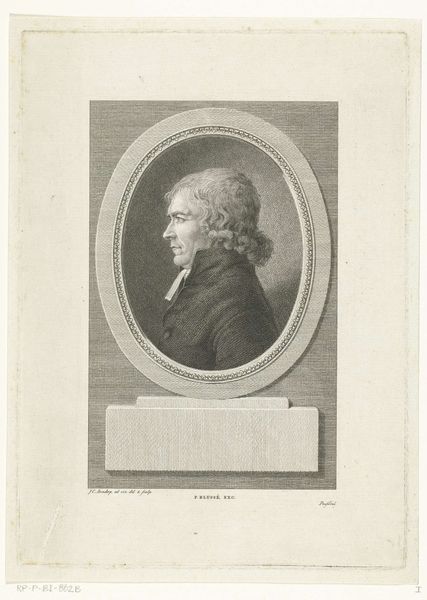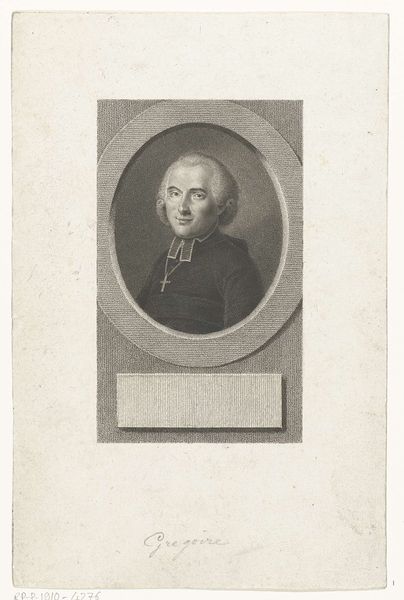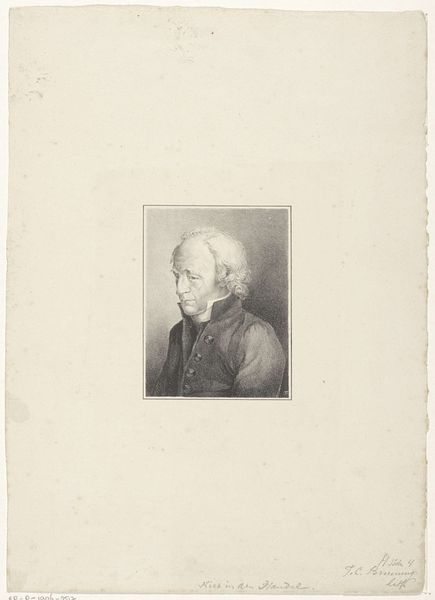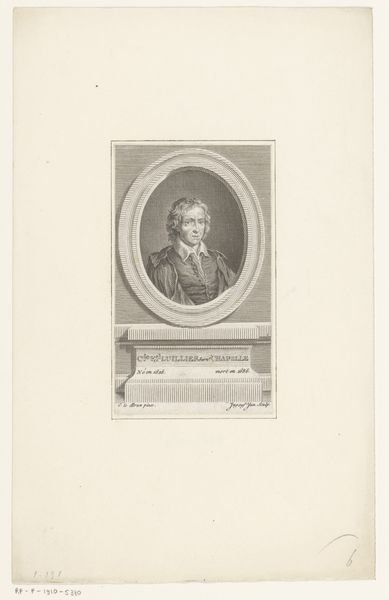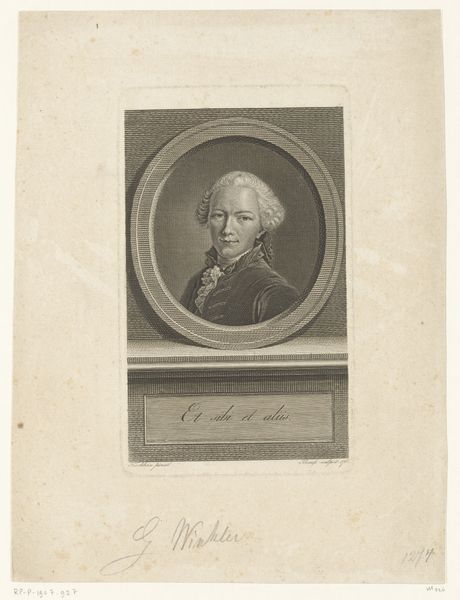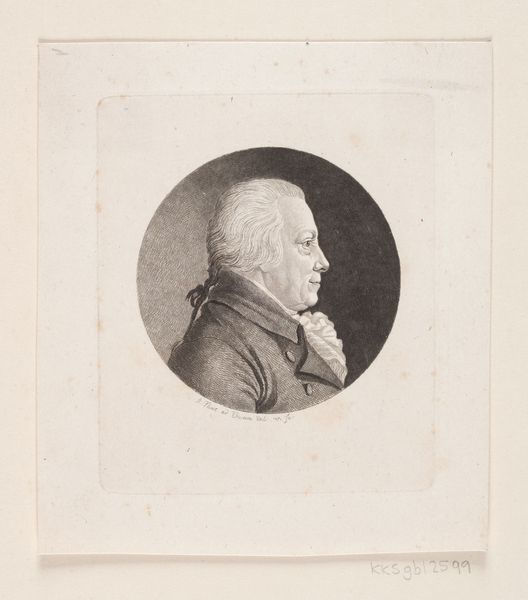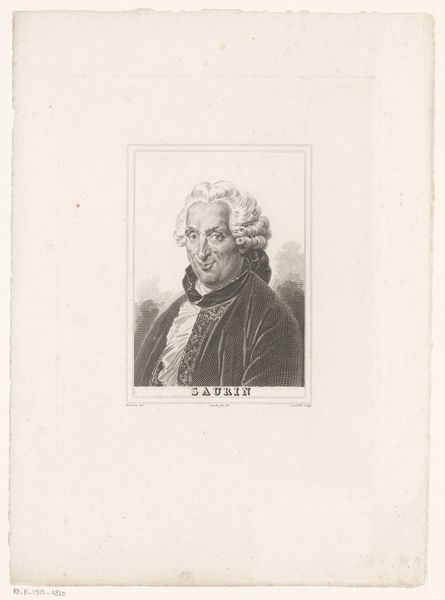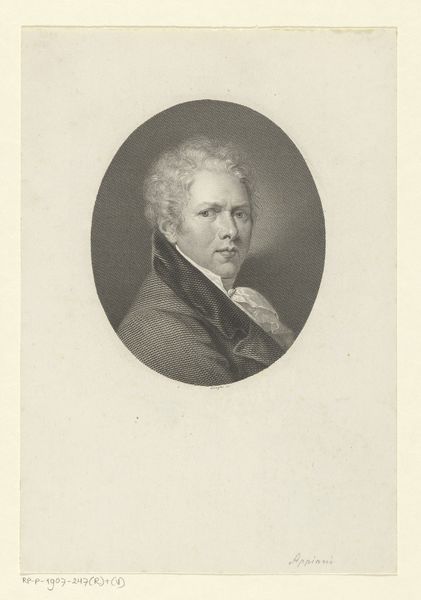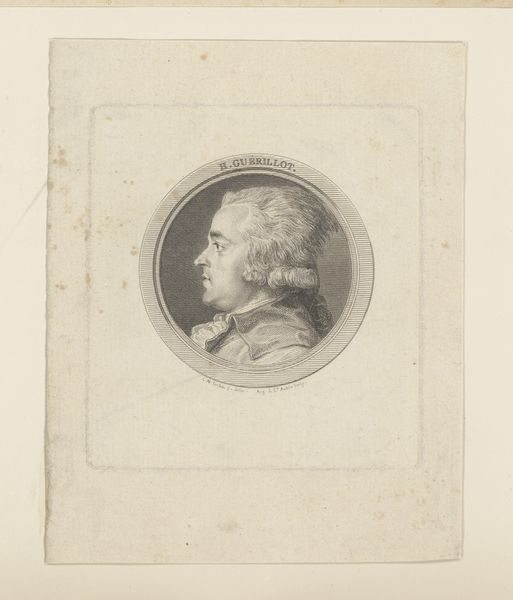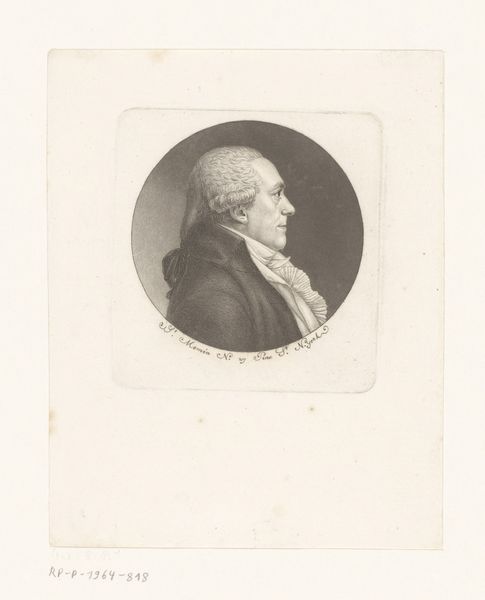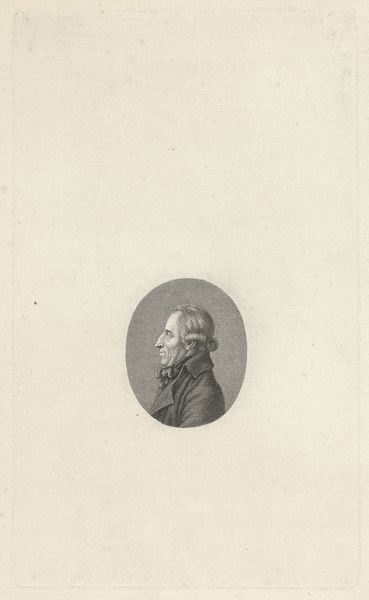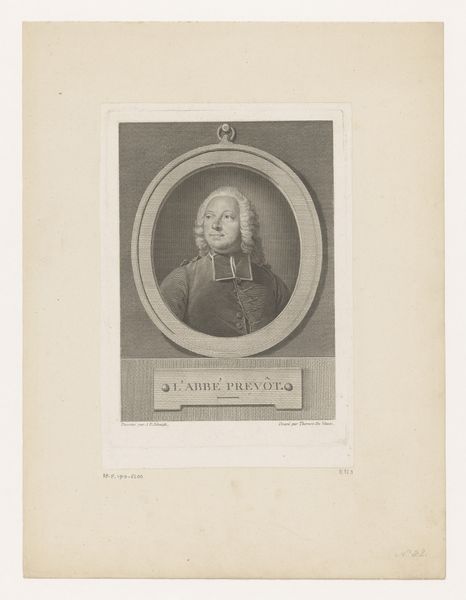
print, etching, paper, engraving
#
portrait
#
neoclacissism
#
yellowing background
#
photo restoration
# print
#
etching
#
old engraving style
#
paper
#
form
#
historical photography
#
line
#
history-painting
#
engraving
#
realism
Dimensions: height 243 mm, width 160 mm
Copyright: Rijks Museum: Open Domain
Curator: Let’s discuss this print of Jacques Guillaume Thouret, created around 1792 to 1808 by Lambertus Antonius Claessens. It is an engraving on paper. Editor: The immediate thing that strikes me is how stark it is, how economical. The clean lines and almost severe profile give it a very austere feel. Curator: Exactly. The Neoclassical style demanded such restraint. Claessens likely utilized meticulous engraving techniques, controlling line thickness and density to sculpt the form of Thouret's face. What social systems allowed paper to be the medium of choice, a mode of social capital that shows the revolution of art for a larger audience? Editor: A pertinent point. Prints made art and ideas accessible, and engravings could circulate rapidly. The very choice to portray Thouret – a prominent lawyer and politician during the French Revolution - speaks volumes. This image becomes an artifact within that revolutionary period, immortalizing someone actively shaping its legal framework. Consider also, that the production and wide dispersal of such prints actively contributed to political mobilization. Curator: Consider the choice of material: paper itself wasn’t just an inert support. The quality of paper and the etching tools themselves dictated the depth and texture of the lines and contributed to the final representation, showing what modes of craftsmanship and making processes allowed such a reproduction to appear. It prompts us to investigate how that access came to fruition. Editor: Indeed, that's the essence of the era – to immortalize key players in an accessible and democratic format. This engraving offers a window into not just an individual, but the revolutionary period in France at large. Its existence prompts a vital discussion concerning visual communication and its instrumental function during turbulent socio-political change. Curator: Thinking about materiality, the image makes me consider not only what paper and etching means at the time but also where did they acquire them? How does paper move in terms of economy at the time to allow this engraving to surface? Editor: It allows one to look back and appreciate the socio-political dynamics embedded even within these types of artworks. Curator: Precisely. It’s an artifact intertwined with labor and social context, raising discussions of high art’s consumption at that period in time.
Comments
No comments
Be the first to comment and join the conversation on the ultimate creative platform.
